#sancho iv of pamplona
Text
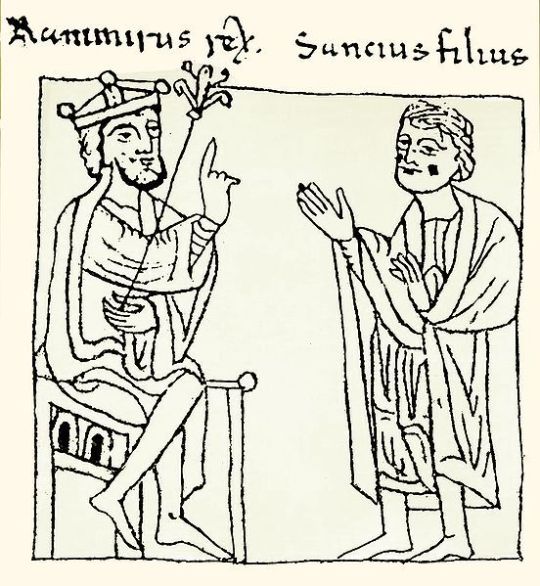



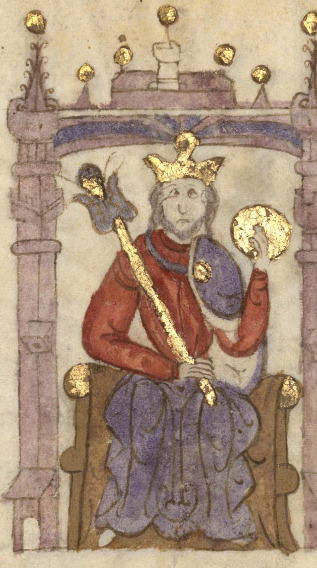

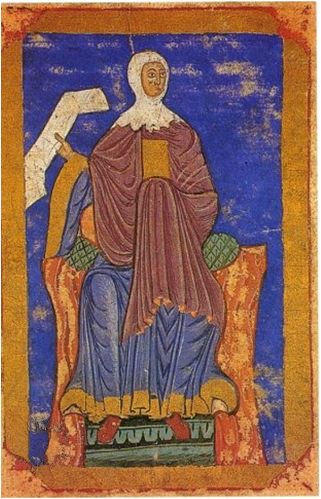

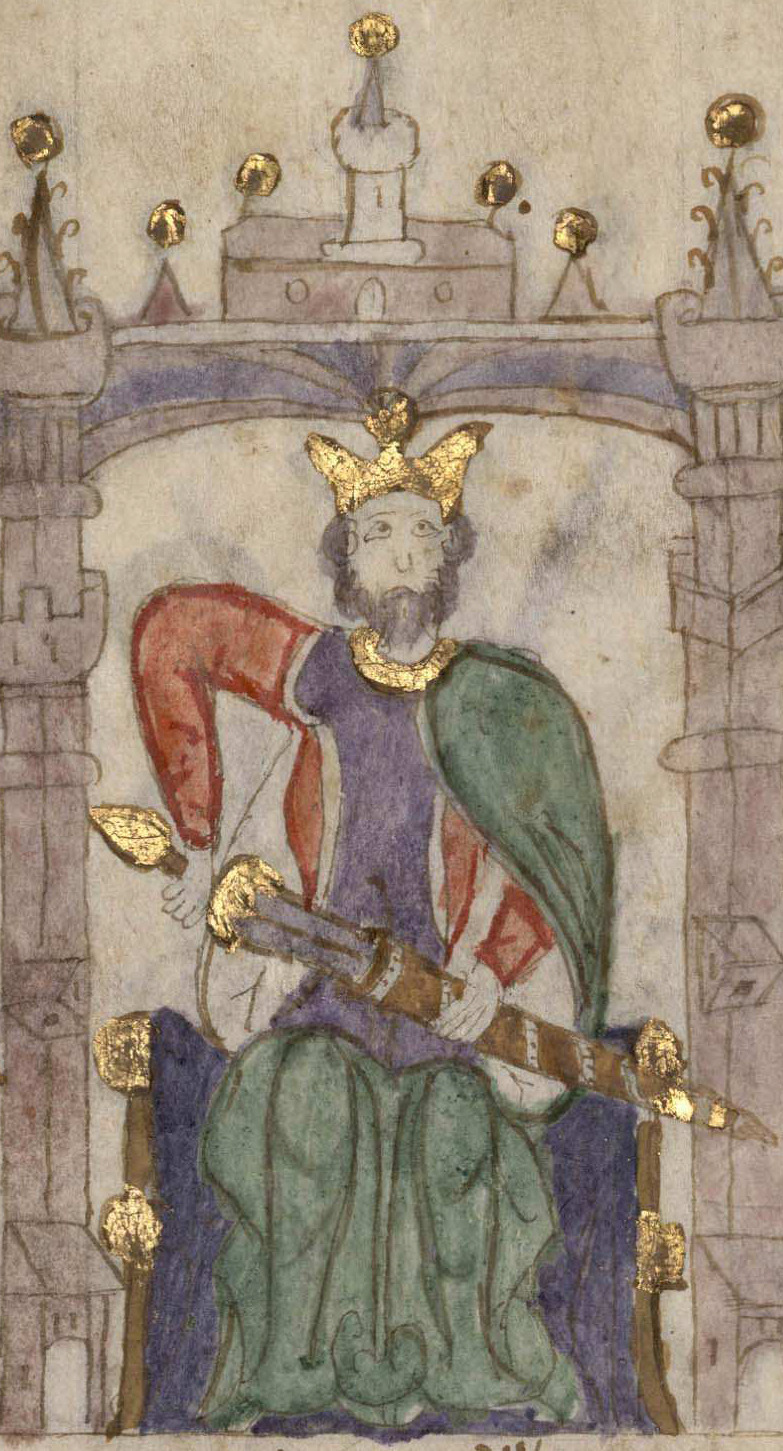

The Bastard Kings and their families
This is series of posts are complementary to this historical parallels post from the JON SNOW FORTNIGHT EVENT, and it's purpouse to discover the lives of medieval bastard kings, and the following posts are meant to collect portraits of those kings and their close relatives.
In many cases it's difficult to find contemporary art of their period, so some of the portrayals are subsequent.
1) Ramiro I of Aragon (1006/7- 1063), son of Sancho III of Pamplona and Sancha de Aybar; with his son Sancho I of Aragon & V of Pamplona (1043-1094)
2) His wife, Ermesinda of Foix (1015 - 1049), mother of Sancho I of Aragon. Daughter of Bernard Roger de Foix and his wife Garsenda de Bigorra; and Sancha of Aragon (1045-1097), daughter of Ramiro I and Ermesinda
3) His father, Sancho III of Pamplona (992/96-1035), son of García II of Pamplona and Jimena Fernández
4) His brother, García III of Pamplona (1012-1054), son of Sancho III of Pamplona and his wife Muniadona of Castile
5) His nephew, Sancho IV of Pamplona (1039- 1076), son of García III of Pamplona and his wife Placencia of Normandy
6) His brother, Ferdinand I of Leon (1016- 1065), son of Sancho III of Pamplona and his wife Muniadona of Castile
7) His niece, Urraca of Zamora (1033-1101), daughter of Ferdinand I of Leon and Sancha of Leon
8) His niece, Elvira of Toro (1038-1099), daughter of Ferdinand I of Leon and Sancha of Leon
9) Sancho II of Castile (1038/1039-1072), son of Ferdinand I of Leon and Sancha of Leon
10) Alfonso VI of Leon (1040/1041-1109), son of Ferdinand I of Leon and Sancha of Leon
#jonsnowfortnightevent#jonsnowfortnightevent2023#asoiaf#a song of ice and fire#day 10#echoes of the past#historical parallels#medieval bastard kings#ramiro i of aragon#sancho i of aragon#sancha of aragon#ermesinda of foix#sancho iii of pamplona#garcía iii of pamplona#sancho iv of pamplona#ferdinand i of leon#urraca of zamora#elvira of toro#sancho ii of castile#alfonso vi of leon#bastard kings and their families#canonjonsnow
26 notes
·
View notes
Text
¡Conoce la apasionante historia de la Dinastía Jimena!
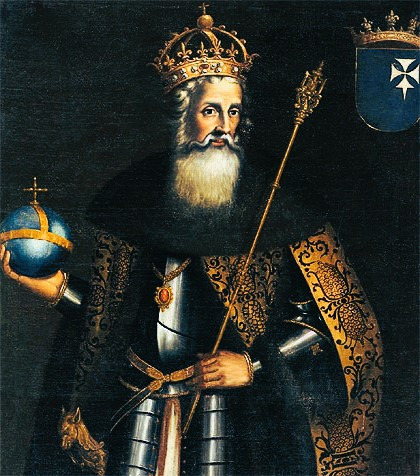
La Dinastía Jimena, también conocida como dinastía Íñiga-Jimena, gobernó el Reino de Pamplona (posteriormente Navarra) durante más de 300 años, desde el año 905 hasta 1234. Su legado está marcado por la expansión territorial, la consolidación del reino y la lucha constante contra los reinos vecinos.
Su origen se remonta a Jimeno Garcés, un noble vascón que luchó contra la invasión musulmana en la península ibérica. Su hijo, Sancho Garcés I, fue quien consolidó la dinastía al ascender al trono de Pamplona en el año 905.
Algunos de los monarcas más destacados de la Dinastía Jimena fueron:
Sancho III el Mayor (1004-1035): Expandió el reino hacia el sur, conquistando territorios como Nájera, Calahorra y Viguera. También estableció relaciones diplomáticas con los reinos cristianos y musulmanes de la península.
Sancho IV el de Peñalén (1054-1076): Se enfrentó a una guerra civil contra sus hermanos, pero logró mantener la unidad del reino. Durante su reinado se produjo la conquista de Tafalla.
Alfonso I el Batallador (1104-1134): Conquistó Zaragoza y Tudela, convirtiendo a Navarra en uno de los reinos más poderosos de la península. Participó en la Reconquista y luchó contra los almorávides.
Sancho VII el Fuerte (1194-1234): Conocido por su gran fuerza física y su valor en la batalla. Participó en la batalla de las Navas de Tolosa contra los almohades.
La Dinastía Jimena llegó a su fin en el año 1234 con la muerte de Sancho VII el Fuerte sin descendencia. El trono de Navarra pasó entonces a la dinastía de Champaña.
¿Qué te ha parecido la historia de la Dinastía Jimena? Cuéntanos en los comentarios qué monarca te ha llamado más la atención y por qué.
2 notes
·
View notes
Text
i check the felipe iv tag on twitter very often so im like, familiar with the regulars i haven’t blocked and there’s one poor soul in particular i have to respect— it’s an account going by the name and image of sancho garcés iii king of pamplona but mostly tweeting current stuff, and they are on this fruitless crusade against the many, MANY people who think the bourbons are some sort of random french dynasty that invaded spain and started ruling it just because. i have to commend them from remaining somewhat patient when someone who clearly hasn’t got a clue keeps arguing with them re: “austria and borbon are different families 😤 educate yourself” and they have to break down why felipe v was carlos ii’s heir for the 26839th time lol
2 notes
·
View notes
Text
BERMUDO II
THE GOUTY
King of León
(born c. 953 - died 999)

pictured above is an imagined portrait of the King of León, by Gerónimo Fresno from 1851
-------------------- ~ -------------------- ~ --------------------
SERIES - Descendants of the Kings of Asturias: Bermudo was a great-great-grandson of Alfonsu III, one of the last Kings of Asturias from 866. Also, his great-grandfather Ordoñu II, King of León is considered to have been King of Asturias from 914, though he kept his base at León.
-------------------- ~ -------------------- ~ --------------------
BERMUDO was born around 953, at an unknown location in the Kingdom of León. His father was Ordoño III, King of León but his mother's identity is uncertain. To this day his origins are a mistery as it is not certain if he was born legitimate or illegitimate.
Some sources that consider him to have been legitimate believe that his mother was his father's recorded wife Urraca Fernández.
Though other sources believe that he was born during the period in which his father was separated from Urraca. So, to support his legitimacy they believe that his father could have married another unrecorded woman.
And another theory is that his mother was a mistress of his father, a certain Elvira.
He was a member of the Ordóñez Dynasty branch of the ASTUR-LEONESE DYNASTY, either from the legitimate or an illegitimate line.
His name was BERMUDO ORDÓÑEZ and as his legitimacy is not certain it is not known if he was considered an INFANTE OF LEÓN from birth.
Nothing is known of his early life, except that when his father died in 956 his half-uncle inherited the throne as King Sancho I. And it is believed that he lived at the Leonese court during the reign of his first cousin King Ramiro III, who inherited the throne in 966.
Probably before 981 he married a certain VELASQUITA, of uncertain origins, and they possibly had one daughter (check below). Sources diverge on who could have been her father, but as it is widely believed that her name was Velasquita Ramírez she could have been of Galician nobility as one of the daughters of Ramiro Menendiz and Adosinda Guterres.
There are also sources that believe that his wife could have been an unrecorded daughter of a previous Monarch of León, but these theories cannot be proven. These sources say that she could have been a daughter of either:
King Ordoño IV and most certainly his recorded wife Urraca Fernández (one of the womans believed to be the mother of Bermudo, so if this theory is correct Bermudo's mother must be another woman);
King Ramiro II and probably one of his wife's, either Adosinda Gutiérrez or Urraka Santxitz of Pamplona; or
King Ramiro III and his wife Sancha Gómez.
Also, another source suggests that his wife was one of the daughters of García Fernández, Count of Castile and Ava of Ribagorza.
It is believed that he married Velasquita before 981 because around 981-82 he was proclaimed and crowned as a rival KING OF GALICIA, by the nobility of Galicia and Portugal that was unsatisfied with the government of his cousin King Ramiro III.
His proclamation led to war between Galicia-Portugal and Castile-León, and the Kingdom of León was divided in two factions until the death of King Ramiro II in 985.
After his cousin died he succeeded as BERMUDO II, KING OF LEÓN, possibly because his cousin did not have legitimate heirs.
However peace between the two factions was not immediately achieved and he relied on the protection of the Caliphate of Córdoba, leaving to more dissatisfaction amongst the nobility over the next years. And over the years he also had to fight Muslim invaders.
Some sources believe that he repudiated his wife after Christmas Eve of 988, because that was the last time she was mentioned in a chart.
By 991 he married for a second time to ELVIRA, of Castilian nobility, and they possibly had four children (check the list below). She was one of the daughters of García Fernández, Count of Castile and Ava of Ribagorza, and according to some sources a sister of his first wife. He also had many illegitimate children.
At the end of his life his gout got worse and the King of León died in 999, at El Bierzo. He was probably in his fourties.
-------------------- ~ -------------------- ~ --------------------
Following his death he was succeeded by his eldest legitimate son as King Alfonso V. However as his son was aged around five, his second wife Elvira and her brother Sancho García, Count of Castile tried to govern the Kingdom of León.
-------------------- ~ -------------------- ~ --------------------
BERMUDO II had one child with a certain VELASQUITA... either his first wife or a mistress...
Cristina Bermúdez - wife of Ordoño Ramírez.
With his second wife ELVIRA he may have had four children...
Sancha Bermúdez - a nun;
Teresa Bermúdez - possible wife of Abdullah, King of Toledo or Almnswr bin Aby Eamr;
Alfonso V, King of León - husband first of Elvira Méndez and second of Urraka Gartzeitz of Pamplona; and
possibly Elvira Bermúdez - probably married.
And he had many illegitimate children...
Pelayo Bermúdez - probably unmarried;
Ordoño Bermúdez - husband of Fronilde Peláez;
Bermudo Bermúdez - probably unmarried;
Piniolo Bermúdez - probably unmarried;
Elvira Bermúdez - possible wife of Nuño García;
Sancha Bermúdez - probably married.
It is not certain if Elvira was her daughter or an illegitimate offspring of her husband.
After King Bermudo II died in 999, Elvira may have acted as Regent for her son King Alfonso V with the support of her brother Sancho García, Count of Castile, although the real power was exercised by Mendo Gundisalviz, Count of Portugal.
By the mid 1010s her influence over her son may have decrease and she died in 1017, in an unknown location.
-------------------- ~ -------------------- ~ --------------------
Check my posts on BERMUDO II's family, his Royal House and his connections to the Kings of Asturias!
He was born a member of the Ordóñez Dynasty branch line of the Astur-Leonese Dynasty.
In a span of five generations, ORDOÑO III was related to the Kings of Asturias through his father…
His father was Ordoño III, King of León.
His grandfather was Ramiro II, King of León.
His great-grandfather was Ordoñu II, King of León - possibly the King of Asturias between 914-24.
His 2x-great-grandfather was Alfonsu III, King of Asturias - the King of Asturias between 866-910.
#bermudo ii#king of león#middle ages#medieval spain#medieval europe#astur leonese dynasty#royals#royalty#monarchy#monarchies#asturian royalty#spanish royals#royal history#asturian history#spanish history#iberian history#european history#world history#history#reconquista#10th century#history with laura
4 notes
·
View notes
Photo
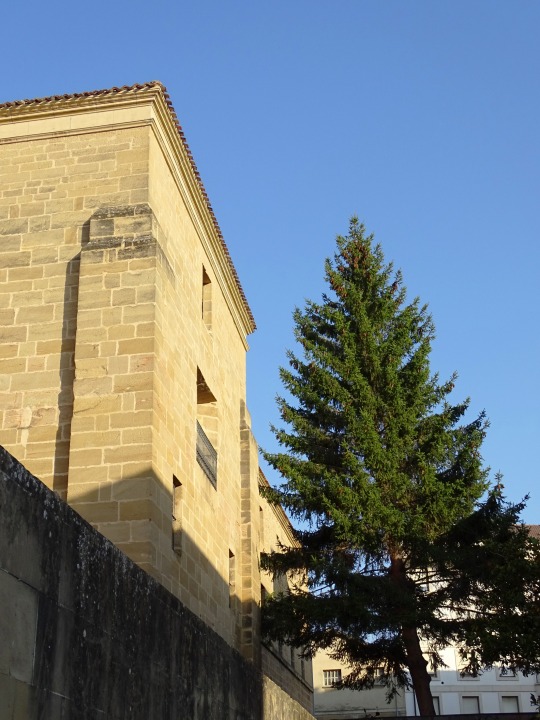

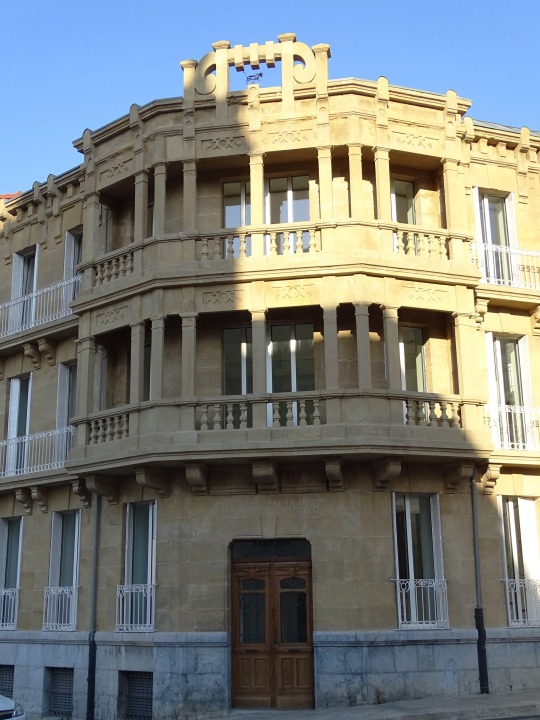

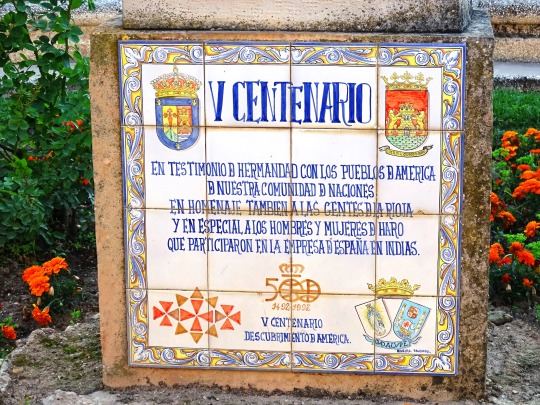
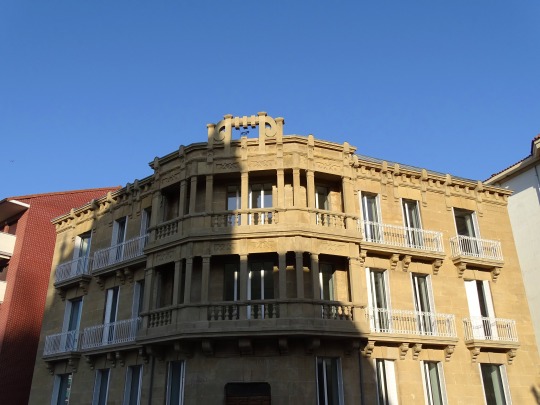




Haro, Spain (No. 8)
There are several theories about the foundation of Haro, taking as the most realistic that of Domingo Hergueta, who argued about the existence of a village that took care of the lighthouse of the hill of La Mota that illuminated the mouth of the river Oja-Tirón in the Ebro, since this area was navigable. The town would receive the name of this lighthouse, which would evolve, like the Castilian, becoming Haro. The area was populated by Berones. During Roman Hispania in the cliffs of Bilibio a defense fort was built that was called Castrum Bilibium.
The first allusion to Haro dates from 1040, in a document of the Navarrese king García Sánchez III of Pamplona "el de Nájera" in which he donated to his wife Estefanía, through the letter of arras, "Bilibium Faro". From 1063 is the first document where the presence of Jews in the town is cited. It belongs to a donation of Sancho Garcés IV of Pamplona to the bishop of Álava don Nuño, in which he gave him the inheritance of the Jew Marlahim, located in the term of Viano.
Source: Wikipedia
#Vega Gardens#500th anniversary memorial#Haro#La Rioja#España#Spain#Edificio Maria Diaz by Pedro Guimón#Northern Spain#Southern Europe#travel#vacation#evening light#original photography#nature#flora#tree#flower#tourist attraction#landmark#architecture#exterior#cityscape#small town#summer 2021#gate#detail#Azulejo#tiles#white colonialism
1 note
·
View note
Photo

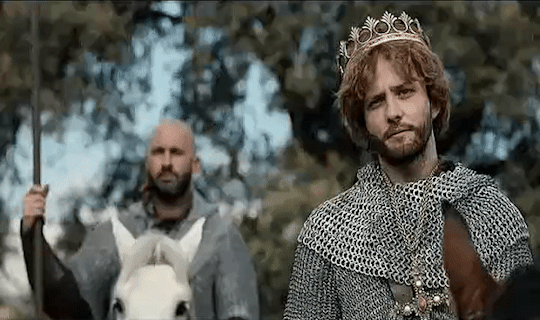

Sancho Garcés IV (c. 1039 – 1076)
He was King of Pamplona from 1054 until his death. He was the eldest son of García Sánchez III and his wife, Estefanía, and was crowned king of Pamplona after his father was killed at the Battle of Atapuerca during a war with the Kingdom of León. Sancho, who was then fourteen years of age, was proclaimed king by the army in the camp by the field of battle with the consent of the king of León, Fernando I, also his uncle. Sancho's mother served as his regent until her death in 1058. Remaining faithful to her husband's policies, she continued to support the monastery of Santa María la Real of Nájera. Soon after Sancho's accession, many lords in the west of the kingdom went over to the Leonese. Sancho and Fernando signed a treaty defining their shared border in 1062.
As king, Sancho received support from his other uncle, King Ramiro I of Aragon. Out of gratitude for "his friendship, his fidelity, his help and his council", Sancho gave Ramiro possession of Lerda, Undués and the castle of Sangüesa.These places were probably to be held as fiefs or in a similar arrangement. Beginning in 1060, Sancho put pressure on al-Muqtadir, king of Zaragoza, and exacted from him annual payments of tribute, parias.
From 1065, he was in conflict with Castile, raised to a kingdom for Fernando's son Sancho II of Castile. This culminated in the so-called War of the Three Sanchos. Faced with an invasion by his cousin Sancho of Castile, Sancho of Pamplona asked for aid from his other cousin, Sancho of Aragon. Their forces were defeated by Sancho of Castile and El Cid. Sancho of Pamplona lost Bureba, Alta Rioja, and Álava to Sancho of Castile.
Sancho IV was assassinated in Peñalén by a conspiracy headed by his brother Ramón Garcés and his sister Ermesinda. During a scheduled hunt, Sancho was forced from a cliff by his siblings. Upon his assassination, the kingdom was invaded and ultimately partitioned between Sancho of Aragon and a third cousin, Alfonso VI of León and Castile. Alfonso occupied La Rioja and Sancho was proclaimed king in Pamplona.
17 notes
·
View notes
Photo

Castillo de Clavijo, La Rioja, España. Origen musulmán. Tras la conquista de Sancho Garcés I de Pamplona y Ordoño II de León de Viguera, Nájera y La Rioja a principios del X, pasó a manos cristianas, mejorándose sus defensas. En el año 960 fue una de las prisiones donde se confinó al Conde Castellano Fernán González. En 1033 Sancho III el Mayor de Pamplona lo donó al Monasterio de San Martín de Albelda y en 1074 pasa a manos de Urraca Iñiguez quien doce años después lo cedió al Monasterio de San Prudencio. En 1285 el rey Sancho IV confirma el privilegio de donación del castillo al concejo de Logroño. A finales del XIV, Diego López de Zuñiga regala a su hijo Iñigo la aldea de Calvijo. En 1440 el rey castellano Juan II concede la tenencia de Clavijo y Alfaro a Juan de Luna. En 1476 Pedro López de Zuñiga, Señor de Clavijo lo vendió a los Condes de Aguilar, Señores de Cameros. #CastilloClavijo #CastillosLaRioja #CastillosEspaña #CastlesSpain #SpanishinUbeda #SpanishLanguage #LanguageTourism #TurismoIdiomas #CulturalTourism #TurismoCultural #TurismodeInterior #Spain #TurSpain #SpanishTourism #HistorySpain #HistoriaEspaña #VisitSpain #VisitUbeda (en Castillo De Clavijo) https://www.instagram.com/p/CQrbzqrhKHJ/?utm_medium=tumblr
#castilloclavijo#castilloslarioja#castillosespaña#castlesspain#spanishinubeda#spanishlanguage#languagetourism#turismoidiomas#culturaltourism#turismocultural#turismodeinterior#spain#turspain#spanishtourism#historyspain#historiaespaña#visitspain#visitubeda
0 notes
Photo
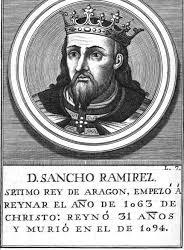
Sancho Ramírez I
(?, 1043-Huesca, 1094) Rey de Aragón (1063-1094) y de Navarra (1076-1094). Hijo y sucesor de Ramiro I de Aragón, durante su reinado se introdujo el rito romano en diversos monasterios bajo su jurisdicción (1071). Asesinado su primo Sancho IV de Navarra, fue reconocido rey en Pamplona (1076) con el nombre de Sancho V. Tomó Ayerbe, Graus (1083) y Monzón (1089), y logró hacerse pagar tributos por el rey musulmán de Huesca (1090). Para establecer relaciones cordiales con Castilla, ayudó a Alfonso VI en la batalla de Sagrajas (1086) y en la defensa de Toledo (1090) y, finalmente, concertó un tratado de ayuda mutua con el Cid (1092). Completó el cerco de Huesca fortificando Abiego, Labata y Santa Eulalia la Mayor (1092), y en el verano de 1094 dispuso sus ejércitos frente a la ciudad, durante cuyo asedio murió un 4 de junio.
0 notes
Text


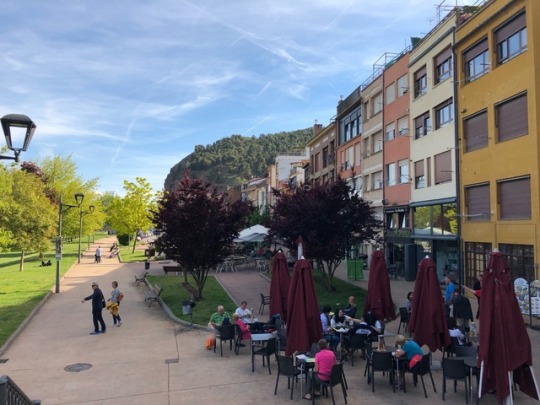


Nájera
Los estudios arqueológicos señalan una densa ocupación prehistórica de los cerros que bordean la ciudad actual y de los situados en su término municipal, al menos desde la Edad de Bronce. Durante la Edad de Hierro se aprecia un continuado proceso de concentración de la población que desembocará en la aparición de poblados más complejos compuestos por viviendas rectangulares parcialmente excavadas en la roca, construidas con entramados de madera y adobes (Cerro Molino). Estos poblados celtibéricos que encuentran, y a veces destruyen, los conquistadores romanos se corresponden a los pobladores berones que citan las fuentes clásicas.
Durante el periodo romano, la Nájera actual forma parte de Tritium Magallum (Tricio), localidad situada a dos kilómetros, en cuya proximidad se han encontrado abundantes alfares y restos de Terra sigillata.
Durante el periodo musulmán se levanta un castillo refugio en la cumbre del cerro que domina Nájera, plaza que será fundamental en el control de La Rioja Alta y de la frontera cristiana.
Desde principios del siglo X se menciona Nájera en las narraciones sobre las continuas luchas entre el norte y el sur, por el control y aprovechamiento de las tierras de frontera. Según algunas fuentes, a la población le dieron los árabes el nombre de Náxara (“Lugar entre peñas” o “Lugar al mediodía”) y a su río Nalia le llamaron Naxarilla. Sin embargo, según otras fuentes, la etimología de esta palabra en forma de Naggara, Naiara o Nazara se remonta a la época visigótica
En 923 el rey pamplonés Sancho Garcés I, en colaboración con Ordoño II de León, conquista Nájera y la Rioja Media y Alta, que deja bajo dominio de su hijo García Sánchez con la denominación de Reino de Nájera.
Tras la destrucción de Pamplona por Abderramán III en el 924 y la muerte de su padre al año siguiente, García Sánchez traslada su residencia a Nájera, en detrimento de Pamplona. Se denomina desde entonces rey de Nájera-Pamplona. García Sánchez desarrolló una activa política de repoblación de los nuevos territorios y favoreció con cuantiosas donaciones a los monasterios de la zona, especialmente a San Millán de la Cogolla.
La misma política mantendrá durante los primeros años Sancho Garcés II (970 - 994), pero las campañas de Almanzor le obligarán, al igual que a su hijo García Sánchez II el Temblón (994 - 1004), a firmar capitulaciones y pagar tributos a Córdoba.
Sancho III fue el gran impulsor de la ciudad de Nájera, donde celebró Cortes y otorgó el famoso fuero de Nájera, origen de la legislación navarra y base del derecho nacional. Favoreció las peregrinaciones a Santiago de Compostela, estableciendo albergues y hospitales, y convirtiendo a la ciudad en punto clave de la ruta jacobea del Camino de Santiago.
Tras la muerte de Sancho III se reparte su Imperio entre sus hijos García el de Nájera, Fernando I de Castilla, Ramiro I de Aragón y Gonzalo Sánchez. Se convierte Nájera en cuna de los reinos de Navarra, Castilla y Aragón, y al primogénito, García Sánchez III (1035 - 1054), llamado el de Nájera por haber nacido y estar enterrado en la ciudad, le corresponden los territorios patrimoniales de Nájera y Pamplona, así como la hegemonía política sobre los demás.
García el de Nájera extendió sus dominios por la Rioja Baja al conquistar Calahorra a la taifa de Zaragoza; fundó el Monasterio de Santa María la Real como sede episcopal,y le dotó de numerosas propiedades. También creó la orden de caballería de la Jarra o de la Terraza, la primera de entre los reinos cristianos peninsulares; favoreció los escritorios monásticos de San Millán, Nájera y Albelda. Murió en la batalla de Atapuerca (Burgos) en lucha contra su hermano Fernando I de Castilla, en septiembre de 1054.
Le sucede Sancho IV el de Peñalén (1054- 1076), que culmina las obras de Santa María la Real. En 1067 se celebra en el monasterio el concilio en el que se acuerda la sustitución del rito mozárabe por el romano. Unido a su primo Sancho Ramírez de Aragón, hizo frente a los intentos anexionistas del rey de Castilla. En junio de 1076, Sancho IV es asesinado por su hermano Ramón en Peñalén, actual Funes. Los conflictos que provoca este acontecimiento desembocan en la división del reino. La parte navarra quedó anexionada al Reino de Aragón. Se pone fin de este modo al llamado "Reino de Nájera". Poco después, Nájera, Calahorra y otros lugares fronterizos fueron incorporadas al reino de Castilla por Alfonso VI de León, que alegaba derechos hereditarios y la tuvo Diego López I de Haro hasta 1113 en que Alfonso I de Aragón, esposo de Urraca I desposee a éste de la tenencia de Nájera y pone en su lugar a Fortún Garcés Cajal, que la tendrá entre 1113 y la muerte del rey de Aragón.
0 notes
Text
1 note
·
View note
Text
Sancho IV Garcés, rey de Pamplona (1054-1076)
[ ¿Pamplona?, c. 1040 – Peñalén (Funes, Navarra), 4-junio-1076] Llamado el de Peñalén
Rey de Pamplona (1054 – 1076), último de la dinastía de los Jimenos
Hijo primogénito de García III el de Nájera y su esposa Estefanía, parece que fue reconocido como rey sobre el propio campo de batalla de Atapuerca (Burgos) donde acababa de perder la vida su padre.
La proclamación contó con la aprobación…
View On WordPress
0 notes
Text







A guide through the monarchs of Aragon in La Catedral del mar & Los Herederos de la tierra
@asongofstarkandtargaryen
During the series the role of the members of the monarchy is secondary, but they are used to help to establish a concrete historical context and they're very determinant in the situation of the Puig and Entanyol families involving political estrategies of supporting this or that king, that gave them benefits or dacay (Arnau's rise with Pedro IV, Genís & Roger rise with Juan I and Martín I and Bernat with Fernando I). So, I wanted to make a recopilation of the monarchs shown during these series and their families.
House of Aragon/ House of Barcelona (descendants of the Jimena dinasty)
The Jimena dinasty is called like that because its origin was Jimeno "the Strong", grandfather of Eneko Arizta, and one of its branches was the Arista-Iñiga dinasty started by Eneko.
Eneko, his son García Iñiguez and his grandson Fortún Garcés were Lords of Pamplona, Fortún Garcés married Awriya bint Lubb ibn Musa (great-grandaughter of Musa the Great), and one of their daughters was Oneka Fortúnez, who married Abd Allah I of Cordoba (their son was Muhammad, who fathered the calipha Abd al-Rahman III with a basque woman called Muzna) and then Oneka married Aznar Sánchez de Larraún, and had a daughter with him, Toda Aznárez. Toda married Sancho Garcés I, the truly first king of Pamplona, was Sancho Garcés I (the first king of the Jimena dinasty).
Sancho Garcés III (992-1036) was king of Pamplona, Count of Aragon and king consort of Castile, whose bastard son with Sancha de Aibar, Ramiro I, inherited the counties of Aragon, Sobarbe and Ribagorza, and united them to form the kingdom of Aragon.
Then Petronila I (1136-1173), Ramiro I's great-grandaughter, married Ramón Berenguer IV count of Barcelona. Their son Alfonso II of Aragon was the first king of the Crown of Aragon and Pedro IV's great-great- great-grandfather.
In summary all the Aragonese monarchs are descedants of Eneko Arizta (and that's the way we can link Irati with LCDM/LHDLT)
Pedro IV
Pedro IV of Aragon, II of Valencia and I of Mallorca (Balaguer, Lleida, Catalonia, September 5, 1319 - Barcelona, Catalonia, January 5, 1387), called "the Ceremonious" or the Punyalet ('the one with the dagger', due to a dagger he used to carry), son of Alfonso IV of Aragon and Teresa de Entenza.
King of Aragon, Valencia and Mallorca (1344-1387); Duke of Athens (1380-1387) and Neopatria (1377-1387); count of Barcelona (1336-1387) and of Ampurias (1386-1387).
In 1338 he married María de Navarra (1326-1347), daughter of Felipe III and Juana II of Navarra. Offspring:
Constanza (1343-1363), married in 1361 to Federico III of Sicily, and Juana (1344-1385), married in 1373 with Juan I de Ampurias.
In 1347 he married Leonor of Portugal (1328-1348), daughter of Alfonso IV of Portugal. She died the following year of the Black Death.
In 1349 he married Eleanor of Sicily (1325-1375), daughter of Pedro II of Sicily. Offspring:
Juan I (1350-1396), Martin I (1356-1410) and Leonor (1358-1382), married to Juan I of Castile. Leonor was the mother of Fernando I of Aragon.
In 1377 he married Sibila de Fortiá, daughter of the Empordà nobleman Berenguer de Fortiá. Offspring:
Isabel (1380–1424), who married Jaime II of Urgel, future suitor for the aragonese crown.
During his reign the Aragonese expansionism in the Mediterranean continued, focused on southern Italy and Greece.
Although he was ally of Alfonso XI, Pedro IV had a great rivalry with his son Pedro I of Castile and fought against him in some conflicts, like the War of the two Pedros (1356-1369) and the first Castilian Civil War (1351-1369), in which Pedro I was supported by Pedro I of Portugal (one of his bastard sons, Juan I of Portugal, was the founder and first king of the Avis dinasty) and Muhammad V of Granada, and Pedro IV supported the bastard children of Alfonso XI with his lover Leonor de Guzmán (Pedro de Aguilar, Sancho Alfonso, Fadrique Alfonso, Enrique II of Castile, Fernando Alfonso, Tello, Juan Alfonso, Juana Alfonso, Sancho and Pedro Alfonso), who started several revolts against Pedro I of Castile. The wars ended when Enrique killed Pedro I, and he became the first king of Castile of the Trastamara dinasty.
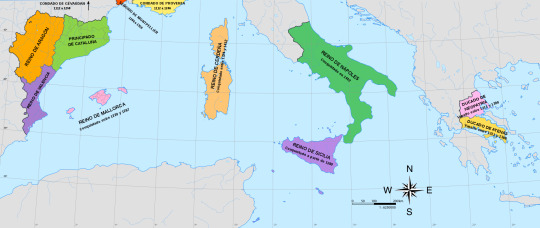
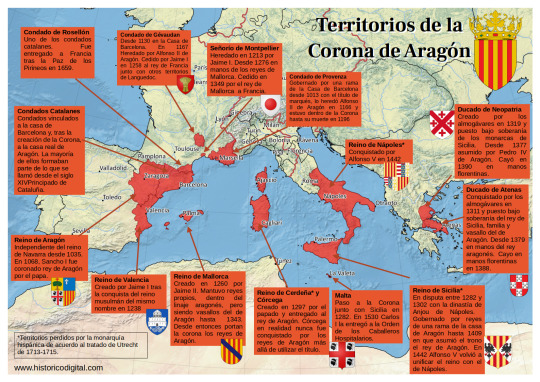
Sibila de Fortiá
Sibila de Fortiá (Fortiá, Girona, Catalonia, 1350 - Barcelona, Catalonia, 1406), queen consort of the Crown of Aragon (1377-1387). She was the daughter of Berenguer de Fortiá and his wife Francesca de Vilamarí. In 1371 she married for the first time Artal de Foces, an Aragonese nobleman, whom she widowed in 1374, and then she the lover of Pedro IV and had a daughter with him, Isabel.Pedro and Sibila married in 1377. After the wedding, Pedro surrounded himself with Empordà nobles as well as Sibila's relatives.
Pedro IV was very ill at the end of the year 1386, and Sibila, fearful of the wrath of the future King Juan, fled to the castle of San Martín de Sarroca (Barcelona), which belonged to her brother Bernat de Fortiá. There she was imprisoned by Juan I, who treated her harshly, accusing her of abandoning the king on his deathbed and of several robberies in the palace. She was confined in the castle of Moncada (Barcelona) until she renounced his property granted by the king. Finally, Sibila retired to the convent of San Francisco in Barcelona, where she died in 1406.
Juan I
Juan I of Aragon, called the Hunter or the Lover of All Kindness (Perpignan, Occitania, France, 1350 - Torroella de Montgrí, Girona, Catalonia, 1396), King of Aragon, Valencia, Mallorca, Sardinia and Corsica, and Count of Barcelona, Roussillon and Cerdanya ( 1387-1396). Son of Pedro IV and Leonor of Sicily.
His first marriage was with Marta de Armagnac (1347-1378), daughter of Count Juan I de Armagnac. With whom he had: Jaime (1374), Juana, (1375-1407) who married Mateo, Count of Foix. After the death of her father, she claimed the throne with her husband, but they were defeated; Juan (1376), Alfonso (1377) and Leonor (1378).
Widowed, Juan married Violante de Bar (1365-1431), daughter of Robert I, Duke of Bar. Offspring:
Jaime Duke of Girona (1382-1388), Yolanda, who married Louis II of Anjou, titular king of Naples. Their son, Luis III, claimed the throne after the death of Martín I, in the engagement of Caspe; Fernando Duke of Girona (1389), Antonia (1391-1392), Juan Duke of Girona (1392-1396), Eleanor (1393), Pedro Duke of Girona (1394) and Juan (1396)
Martin I
Martin I of Aragon, also called the Human or the Old (Girona, July 29, 1356-Barcelona, May 31, 1410), was king of Aragon, of Valencia, of Majorca, of Sardinia and count of Barcelona (1396-1420) and king of Sicily (1409-1410). Second son of Pedro IV of Aragon and his third wife Leonor of Sicily.
Martín was called "the Human" because of his great passion for the Humanities and books. The library of Martín I is the first that could be considered from Renaissance, if at that time in the history of the Iberian peninsula the term can already be used.
Martin married in 1372 with Maria de Luna, daughter of Lope, the first count of Luna, in 1374. From this union they were born:
Jaime (1378), Juan (1380) and Margarita (1388) and Martin I of Sicily "the Younger" (1376-1409), first husband of Blanca I of Navarra.
When Martin the Younger died, Martin married Margarita de Frades, although they left no issue.
His entire reign was marked by the Western Schism that divided Christianity since 1378. He was a supporter of the popes of Avignon (where he went the year of his coronation to swear allegiance to Benedict XIII "the Pope Luna", Pedro Martínez de Luna y Pérez de Gotor, with whom it seems that he came to establish a friendly relationship ), from whom he obtained support in his claims over the kingdom of Sicily against the Anjou, supporters of the popes of Rome. In 1400, he would marry his niece Yolanda to Louis II of Anjou in order to defuse tensions. He met in Avignon with the antipope Benedict XIII, Aragonese and a relative of the queen, with the intention of reaching a solution to the schism and, later, in 1403 he intervened militarily against the siege that Benedict suffered in his papal seat, rescuing him and welcoming him in Peñíscola .
House of Trastamara (the Aragonese branch)
Fernando I
Ferdinand I of Aragon (Medina del Campo, Valladolid, Castile and Leon, November 27, 1380-Igualada, April 2, 1416), also called Fernando de Trastámara and Fernando de Antequera, the Just and the Honest, was an infant of Castile, king of Aragon, Valencia, Mallorca, Sardinia, Count of Barcelona (1412-1416), and regent of Castile (1406-1415), during the minority of Juan II of Castile. Son of Juan I of Castile and Leonor of Aragon.
He was the first Aragonese monarch of the Castilian dynasty of the Trastámara, although he was of Aragonese origin on his mother's side.
He married Leonor de Alburquerque
Alfonso the Magnanimous (Medina del Campo, 1394-1458), king of Aragon, with the name of Alfonso V, and of Naples and Sicily, with the name of Alfonso I.
María de Aragón (Medina del Campo, 1396-1445), first wife of Juan II of Castile and mother of Enrique V of Castile
Juan II (Medina del Campo, 1397-1479), King of Aragon and King consort of Navarre.
Enrique (1400-Calatayud, 1445), II Duke of Villena, III Count of Alburquerque, Count of Ampurias, Grand Master of the Order of Santiago.
Leonor (1402-1445), who married Eduardo I of Portugal. Mother of Alfonso V of Portugal, Juana of Portugal (Enrique IV's second wife) and Leonor of Portugal, who married Frederick III of Habsburg (they were parents of emperor Maximilian I of Austria)
Pedro (1406-1438), IV Count of Alburquerque, Duke of Noto.
Sancho (1400-1416)
Alfonso V
Alfonso V of Aragon (Medina del Campo, 1396 – Naples, June 27, 1458), also called the Wise or the Magnanimous, king of Aragon, of Valencia, of Majorca, of Sicily, of Sardinia and Count of Barcelona (1426-1458); and King of Naples (1446-1458).
Alfonso V can be considered as a genuine prince of the Renaissance, since he developed an important cultural and literary patronage that earned him the nickname of the Wise and that would make Naples the main focus of the entry of Renaissance humanism in the sphere of the Crown of Aragon.
From his relationship with his lover Giraldona de Carlino, a napolitan noblewoman, he had three children:
Fernando (1423-1494), his successor in the kingdom of Naples under the name Fernando I.
Maria (1425-1449), married to Lionel, Marquis of Este and Duke of Ferrara.
Leonor, or Diana Eleonora (?-1450), married the nobleman Marino Marzano, Prince of Rossano.
Maria of Castile
María of Castile (Segovia, Castile and Leon, November 14, 1401-Valencia, October 4, 1458). Infanta of Castile, Princess of Asturias (1402-1405) and Queen of Aragon (1416-1458) for her marriage to Alfonso the Magnanimous. First daughter of Enrique III "the Mourner" and Catherine of Lancaster. Sister of Juan II of Castile, untie of Enrique IV and Isabel I.
The marriage between María and Alfonso is celebrated in the Cathedral of Valencia on October 12, 1415. The ceremony was officiated by the antipope Benedict XIII, who also granted the matrimonial dispensation for the wedding.
In 1420, when the king left for Naples for the first time, he left the government of his kingdoms in the hands of Maria as lieutenant general. The absence of the Magnanimous would last three years, during which María had to face the rapid deterioration of the economic situation in Catalonia, the territorial struggle with the Castilian Crown, as well as the conflicts of a social nature that shook her in different kingdoms. On his return to Aragon in 1423, Alfonso V began the war with Castile, along with his brother King Juan of Navarra. But her financial resources were exhausted and in 1429 Queen María had to act as a mediator between her husband and her brother, King Juan II of Castile, to put an end to the dispute. However, Alfonso's situation did not improve, due to the recession suffered by the Catalan economy and the social conflicts caused by it. The Courts of Barcelona in 1431 demanded from the king a series of measures to correct the enormous deficit of the Catalan treasury and trade. But Alfonso, fed up with these matters, returned to Italy and gave full powers to the queen as ruler of Aragon; he left the Iberian Peninsula forever on May 29, 1432. This marked Alfonso V's final break with the Crown of Aragon, which, however, he never renounced.
+ Bonus track (although he doesn't appear in this series)
Juan II
Juan II of Aragon and Navarra, the Great, or the Faithless according to the Catalan rebels who rose up against him (Medina del Campo, June 29, 1398-Barcelona, January 20, 1479) was Duke of Peñafiel, King of Navarre (1425-1479), King of Sicily (1458-1468) and King of Aragon, Mallorca, Valencia, Sardinia (1458-1479) and Count of Barcelona, son of Ferdinand I of Aragon and Leonor de Albuquerque.
From his first marriage to Blanca I of Navarra (daughter of Leonor of Castile and Carlos III of Navarra):
Carlos (1421-1461), Prince of Viana and Girona, Duke of Gandia and Montblanch, titular King of Navarra as Carlos IV (1441–1461), married Agnes of Cleves. He wrote the 'Chronicles of the Monarchs of Navarra', about the history of his antecessors, from Eneko Arizta in the 8th century up to the 15th century.
Juan (1423-1425)
Blanca of Navarra (1424-1464), first wife of Enrique IV of Castile
Leonor (1425-1479), married to Gastón IV de Foix, Queen of Navarre under the name of Leonor I.
From his second marriage to Juana Enríquez:
Leonor of Aragon (1448)
Fernando II (1452-1516), king iure uxoris of Castile (1474-1504) and then regent between 1507 and 1516, under the name of Fernando V due to his marriage to Isabel I, king of Sicily (as Fernando II, 1468-1516), Aragon and Sardinia (as Fernando II, 1479-1516), Naples (as Fernando III, 1504-1516), and from Navarra (as Fernando I, 1512-1516)
Juana (1455-1517), second wife of Fernando I of Naples. Her daughter Juana married Fernando II of Naples (Fernando I of Naples' grandson)
During his youth, Juan fought in the Castilian-Aragonese war (1429-30) and the Castilian Civil War (1437-1445) in the Aragonese team against Juan II of Castile, his son Enrique and the Constable Álvaro de Luna (favourite of Juan II), due to the Aragonese political influences in Castile and the full control that Álvaro de Luna had over Juan II of Castile that allowed him to become very powerful, so some members of the Castilian nobility wanted to remove Álvaro out of Juan II side because of that, and the Aragonese reacted to the anti-aragonese convictons of Álvaro.
Álvaro de Luna arranged a new marriage between Juan II of Castile and Isabel of Portugal (mother of Isabel I) in 1447. The constable intended with this dynastic alliance to strengthen the political ties that united Castile and Portugal against the common enemy: the Catalan-Aragonese Crown, but from 1449, Isabella of Portugal indirectly supported the maneuvers of the Great League of Nobles (allies of the Aragonese) formed against the constable. But it would not be until 1453 when Juan II of Castile, possibly tired of the continuous pressure from the aristocracy, left Álvaro on his own. It has often been said that it was the queen herself who demanded that her husband signed the prison order against Álvaro, through Juan Pacheco, Marquis of Villena.
By 1441 Blanca I de Navarra died and Juan II married the daughter of Fadrique Enríquez (one of his Castilian allies, the admiral of Castile), Juana Enríquez y Fernández de Córdoba.
After the death of Blanca I, a dispute between Juan II and Carlos de Viana about the sucession for the Navarrese throne. Juan was king Iure uxoris of Navarre and wanted to be keep his position as king, but Carlos and his supporters claimed that the prince was the rightful king as firstborn son of the queen and in 1451 the Navarrese civil war started.
In the following years the tension between Juan and Carlos increased with the birth of Fernando, who was pushed by his mother Juana to be the heir of Aragon and Navarra, which Juan later accepted. This change in the sucession was not accepted in Catalonia, that supported Carlos de Viana birthrights, and they started a rebellion against Juan II.
Other supporter of Carlos was Enrique IV, who offered his sister Isabel to Carlos in marriage as a sign of their alliance, but the wedding never happened.
Carlos died in 1461, although the war didn't ended because the Catalan nobility proposed other suitors for the Crown of Aragon and the Principality of Catalonia, like Enrique IV, Pedro of Portugal (grandson of Jaime II of Urgell) and Renato de Anjou during the Catalan civil war, that ended in 1472.
It's interesting that the interesting that the current situation of the Estanyol family at the end of Los Herederos de la tierra is that there are two brothers from different mothers, and whose father have benefited one of them over the other, so it may lead to tensions from the part that was not benefited, Arnau Jr is the main heir in Bernat's will, so maybe in the future Marta Destorrent will try to pit her son Baltasar against his elder brother to take Arnau Jr's place. By period of time I find very likely that this happens during the reigns Maria of Castile and Juan II, and the situation of the Estanyol succession could parallel the Carlos de Viana-Fernando II problem, although in this case the younger son was the benefited one and the one who inherited his father's kingdoms and maybe the Estanyols are part of the Catalan nobility that defended Carlos' birthrights, although some other Catalan nobles supported Juan II & Fernando alongside of peasants and smallfolk, during the First Remensa War during the Catalan civil war.
The Remensa War consisted in revolts organised by peasants who wanted to end the servitude to which their feudal lords had subjected them, so I think that probably the Estanyol-Llor family would support the peasants because of their backgrounds.
#la catedral del mar#los herederos de la tierra#the cathedral of the sea#heirs to the land#history#crown of aragon#aragonese monarchs#pedro iv de aragón#juan i de aragón#martín i de aragón#sibila de fortiá#fernando i de aragón#alfonso v de aragón#maria de castilla#juan ii de aragón#gifs#period dramas#house of aragon#house of trastamara#house of barcelona#long post
21 notes
·
View notes
Text
#SinAgua #SinLuz #SinCANTV en el Hatillo
Este resumen de noticias llega a ustedes por cortesía de @NotiHatillo /La Ceiba de Ramón Muchacho /Alcaldía de El Hatillo
El Hatillo 19 de julio del 2019
Titulares
Reportan hatillanos vía redes sociales ausencia total de agua en las tuberias. Desde este miércoles y luego de que @HIDROCAPITALca anunciará la reparación del problema que afecto al sistema Tuy, el municipio El Hatillo continúa sin recibir el líquido, los hatillanos claman por agua y aun no se recibe respuesta concreta sobre el ciclo que debió haber comenzado este pasado miércoles.
Recuperación integral de la intercomunal del Hatillo llega ya a la entrada al pueblo del Hatillo, alcaldía continúa realizando mejoras para aumentar la calidad de vida de los hatillanos.
Debido a la falta de poda y tala por parte de @CORPOELECinfo se estan produciendo fallas y apagones en red electrica del municipio, la labor de despeje del tendido eléctrico es exclusivo de Corpoelec y azegursn habitantes ni se realiza desde hace tiempo con las consecuentes fallas que esto genera.
@Asoripotovecino entregó reconocimiento el día del policía a @PoliciaHatillo por su labor en resguardo de los Hatillanos.
Algunos sectores del Hatillo se encuentran sin servicio eléctrico segun información recabada en redes sociales.
Continúan labores de recuperación por parte de la alcaldía de El Hatillo de las vías de la Zona rural.
Escuela de Artes y Oficios de la Alcaldía de el Hatillo prosigue brindando cursos a aquellos jóvenes que desertaron del sistema educativo para brindarles un medio de subsistencia en estos tiempos tan difíciles.
Alcalde Elías Sayegh despacho desde la zona del Calvario para escuchar a los 6 habitantes de ese popular sector del H3y brindar soluciones a los problemas cotidianos de la misma.
Alcaldía de el Hatillo promueve diversas Actividades para celebrar el día del niño. Este sabado y en conjunto con Fundahinfa se estará celebrando el mismo en lad instalaciones de la cancha Vinicio Mata del Hatillo.
Presidente Guaidó desde Nueva Esparta: “Estamos trabajando en todos los terrenos para la recuperación de un país que clama libertad.”
Noruega pidió precaución a políticos venezolanos con comentarios sobre Barbados.
El Nacional: Representantes de Maduro y la oposición dicen que el diálogo avanza.
Tal Cual: Noruega mantiene las esperanzas de que se logre un acuerdo beneficioso para Venezuela.
Jorge Rodríguez: Seguimos en los diálogos y ratificamos el pleno respeto a las pautas establecidas.
The Economist: ¿Pueden las conversaciones en Barbados restaurar la democracia?
The Economist: “El plan es reunirse cada lunes a miércoles en Barbados para discutir una agenda de seis puntos, comenzando con elecciones y el levantamiento de sanciones impuestas por los Estados Unidos y otros.
Juan Guaidó convocó para el próximo martes 23 de julio una gran sesión del Parlamento en las calles de Caracas, con el objetivo de dar importantes anuncios, en el marco del diálogo con el oficialismo.
EFE. La Agencia norteamericana USAID confirmó que se aprobó el desvío de fondos, en principio asignados a Centroamérica, en respaldo al líder Juan Guaidó, reconocido como presidente interino de Venezuela, para “asistir a la sociedad civil” y ampliar “esfuerzos de buena gobernanza”.
Vicepresidente norteamericano Pence enfatiza que Maduro debe irse para alejar la influencia maligna de Hezbolá en Occidente. Pence también denunció los ataques de Maduro a la iglesia católica.
EFE: Denuncian ante Congreso de EEUU que el ELN ha crecido al amparo de Maduro.
El ELN es una “fuerza terrorista” que ha crecido bajo el “amparo” del presidente de Venezuela, Nicolás Maduro, denunciaron en Washington el embajador de Colombia en EEUU y Carlos Vecchio, representante de Guaidó.
Atentado del ELN con explosivos dejó tres heridos.
La Patilla: Parlamento Europeo pide más sanciones contra Venezuela tras asesinato de Acosta Arévalo.
Tintori: En reunión con Borrell, pedimos más sanciones contra el dictador; hoy el Europarlamento ratificó su apoyo a Venezuela.
La Patilla: Por presunto lavado de dinero, México congeló cuentas de empresas que vendía productos a los CLAP.
Gobierno de Guaidó respalda bloqueo a personas relacionadas con el CLAP.
Presidente Guaidó alertó sobre la huelga de hambre de Édgar
Zambrano: «Su lucha, y la de toda Venezuela, no descansa».
Tamara Suju: Me informan que fue secuestrado por funcionarios vestidos de negro y encapuchados el padre del Sargento Mayor Edgar Torres, (…) Edgar fue quien manejo la tanqueta q cruzo el puente hacia Colombia, el 23F.
La Patilla: CICPC detiene al periodista Wilmer Quintana con la excusa de “incitación al odio”.
El Nacional. Esposa de Caguaripano a Cristopher Figuera: Sus palabras no son sinceras.
Irene Olazo Mariné publicó una carta abierta destinada al ex director del SEBIN en la que le pide hablar con la verdad y asumir su responsabilidad por las violaciones de derechos humanos que ocurrieron cuando presidía la DGCIM.
El Pitazo: Director de El Pitazo denunció ante el MP a Movistar, Digitel y Conatel por bloqueo sistemático del portal de noticias.
Delsa Solórzano a Cabello: Usted quiso montar una olla y no llegó ni a la leña.
Henri Falcón contrató a una firma de cabildeo canadiense para tratar de convencer al presidente Donald Trump, al gobierno ruso y otros de que él representa la mejor opción para reemplazar al gobernante Maduro, reportó el portal estadounidense “Político”.
Harvest Natural Resources Pide a tribunal de EEUU la presencia de Rafael Ramírez en el juicio.
Precio del dólar paralelo rompe barrera de los 10 mil bolívares.
Bloomberg: El regreso al mercado paralelo sugiere otra inminente devaluación en Venezuela.
Bloomberg: Guaidó intenta bloquear movimiento de Maduro sobre CITGO. El líder de la oposición está pidiendo a una corte en Delaware proteger sus nombramientos en la junta directiva de la compañía estatal.
BID: La mayor urgencia en América Latina es revertir la caída de Venezuela.
Descifrado. Toro Hardy: Venezuela necesita más del mercado americano que ellos de nuestro petróleo.
Reuters: Amuay reanuda parcialmente sus operaciones.
Noticiero Digital: CVG suspendió repentinamente entrega del CLAP a jubilados. Infobae.
Colapso educativo: Venezuela cierra un año escolar cumpliendo sólo 70% del calendario 2018-2019.
Dante Rivas anunció plan de racionamiento eléctrico en Nueva Esparta.
La Prensa: Suspenden diálisis en el Seguro Social de Lara.
Nicolás Maduro: En tiempos de revolución se pare más porque es un pueblo feliz.
Baltazar Porras: Cada día son más los ancianos y niños que mueren en Venezuela.
Muere migrante venezolana arrollada en la vía Pamplona del norte colombiano.
El Nacional: Indignados los venezolanos que tramitan permisos para viajar a Perú. Solo atienden a 30 personas diariamente en el Consulado en Caracas. A las afueras hay líderes de cola que controlan los ingresos con listas de espera.
El Mercurio: 74% de las visas tramitadas por venezolanos en Chile han sido rechazadas.
El Nacional. Sin retorno: venezolanos en el limbo en frontera entre Chile y Perú.
EFE. HRW: Se debe evitar imponer requisitos imposibles a migrantes venezolanos.
OEA: Número de migrantes venezolanos podría subir a 8,2 millones en 2020.
Cuba permite matrimonio entre de dos personas transgénero.
Convocan un cacerolazo en Puerto Rico para pedir la renuncia de Rosselló.
AP: México buscará devolución de dinero de «El Chapo» Guzmán.
Cánticos racistas en acto electoral de Trump intensifican tensión en EEUU.
EFE: Detienen a 70 religiosos en protesta contra política migratoria de EEUU.
Pedro Sánchez veta a Pablo Iglesias como vicepresidente del gobierno español.
AFP: Trump asegura que EEUU derribó un dron iraní en el estrecho de Ormuz. Irán dice haber retenido un petrolero extranjero en el estrecho de Ormuz.
33 muertos en Japón en un incendio intencionado en un estudio de ‘anime’.
Ministros del G7 reiteraron riesgos de la criptomoneda de Facebook.
S&P: +0.36%; Dow: +0.01%; Nasdaq: +0.27%.
El periodista venezolanos Boris Muñoz recibe el Premio María Moors Cabot 2019 por su trabajo como editor de Opinión en The New York Times en Español.
El Mundo. Hacienda española cerca a Neymar: pide el embargo de su millonaria prima de renovación del Barça. El PSG quiere vender a Neymar para evitar que Mbappé se vaya con Guardiola.
Regresa Ender Inciarte, con el desafío de no tener ya un puesto garantizado.
Martín Prado regresó a la acción con los Marlins.
Salomón Rondón fichará con Dalian Yifang si otro equipo no iguala la oferta.
El País: La princesa Mako dice adiós a la familia real japonesa con un viaje a Latinoamérica. La boda de la sobrina del emperador Naruhito con un plebeyo, pospuesta hasta 2020, hará de ella una ciudadana más.
Pronóstico del tiempo cortesía del INAMEH válido por las próximas 6 horas.
Situación General
Válido para el día Viernes, 19 de Julio de 2019. Entre las 06:00 y las 12:00 HLV.
SITUACIÓN GENERAL: Onda Tropical Nro. 24 de la temporada sobre el oriente del país, avanza hacia el oeste con poco desarrollo nuboso; debido a influencia de Polvo del Sahara, que inhibe la humedad en la capa baja de la atmósfera. Por otra parte la Zona de Convergencia Intertropical activa sobre Amazonas, Bolívar, Llanos Occidentales, Andes y Sur del Zulia; origina nubosidad durante gran parte del periodo, con precipitaciones de intensidad variable, algunas con actividad eléctrica. Se prevé acumulados de precipitaciones entre 10-25 litros/m2. El resto del país con escasa nubosidad matutina. Costas y Región Insular con escasa nubosidad.
Efemérides de hoy.
64 - principio del gran incendio de Roma.
711 - en la batalla de Guadalete, Táriq ibn Ziyad vence al rey Rodrigo (líder de los visigodos), victoria que supuso la casi total conquista musulmana de la península ibérica.
1068 - en España, Sancho II de Castilla vence a su hermano Alfonso VI de León.
1131 - en los condados catalanes Ramón Berenguer IV de Barcelona asume el gobierno tras la muerte de su padre Ramón Berenguer III.
1195 - en Ciudad Real, derrota absoluta de Alfonso VIII de Castilla (Batalla de Alarcos).
1333 - en Escocia se libra la batalla de Halidon Hill, durante la última de las guerras de la independencia escocesa.
1525 - en Alemania, Martín Lutero recibe la excomunión del papa de Roma.
1544 - en Francia, comienza el sitio a Boulogne-sur-Mer, durante la invasión del rey inglés Enrique VIII, en el marco de la guerra italiana de 1542.
1545 - en la isla de Wight (Inglaterra) —en el marco de la Guerra Italiana de 1542 a 1546— segundo día de la batalla del estrecho de Solent.
1545 - en la región Vrancea (Rumania) a las 8:00 sucede un terremoto de 6,7 grados en la escala sismológica de Richter y una intensidad de 8.
1553 - en Inglaterra, María I, la Católica, es coronada reina, sustituyendo a Lady Jane Grey (quien reinó solo nueve días).
1588 - en Inglaterra —en el marco de la Guerra Anglo-Española (1585)—, la Armada Española arriba al canal de la Mancha (batalla de Gravelines).
1605 - en Guangdong (China) sucede un terremoto de 6,5 grados en la escala sismológica de Richter.
1610 - en Santiago de los Caballeros de Guatemala (actual Antigua), es nombrado obispo Juan de las Cabezas Altamirano (obispo de Santiago de Cuba).
1623 - en Roma, 55 cardenales entran en cónclave para elegir al sucesor del papa Gregorio XV, fallecido el 8 de julio.
1624 - en Hebei (China) sucede un terremoto de 5,5 grados en la escala sismológica de Richter y una intensidad de 7.
1692 - en Salem (Massachusetts), cinco mujeres son asesinadas acusadas de brujería, probablemente con el fin de confiscar sus bienes.
1698 - en Ambato (Ecuador), cerca del volcán Carihuairazo, un terremoto deja «miles» de víctimas fatales. (Posiblemente sea el mismo terremoto que el 20 de junio de 1698).
1747 - en Italia se libra la batalla de la Assietta: las exiguas tropas piamontesas vencen al ejército francés de Luis XV.
Fundador del Protestantismo Martín LuteroFundador del Protestantismo Martín Lutero
1760 - en Puerto Rico, varios españoles realizan solicitud formal para fundar la ciudad de Mayagüez.
1808 - en España se libra la Batalla de Bailén.
1821 - en Londres (Inglaterra), Jorge IV del Reino Unido es coronado rey.
1824 - en México, es fusilado el ex emperador Agustín de Iturbide (que abdicó en 1823); había regresado a su país con intención de sumarse al ejército para repeler una invasión europea.
1845 - en Nueva York (EE. UU.), un incendio destruye 300 edificios.
1848 - en Seneca Falls (cerca de la ciudad de Nueva York) se lleva a cabo la primera Convención para los Derechos de la Mujer, organizado por Elisabeth C. Stanton y Lucretia C. Mott.
1849 - en España: se promulga la ley que obliga al uso del Sistema Métrico Decimal en todas las transacciones comerciales.
1862 - en EE. UU., en el marco de la Guerra de Secesión, la campaña hacia el norte del general confederado John Hunt Morgan es obstaculizada cuando la mayor parte de sus hombres es capturado mientras tratan de escapar a través del Río Ohio en Buffington Island (Ohio).
1870 - en el Vaticano, la Iglesia católica promulga el dogma de la infalibilidad papal.
1870 - Francia declara la guerra a Prusia. Inicio de la Guerra Franco-Prusiana (1870-1871).
1873 - en Australia, William Gosse es el primer europeo que ve Ayers Rock; las renombra en honor al premier de Australia del Sur, sir Henry Ayers.
1875 - en Milán (Italia) se estrena la ópera La falce de Alfredo Catalani.
1879 - en Nuevo México (EE. UU.) Doc Holliday mata por primera vez, cuando un hombre le dispara en su saloon.
1900 - en España, se estrena con gran éxito la zarzuela de los Hermanos Álvarez Quintero El estreno, con música de Ruperto Chapí.
1900 - en Francia, se inaugura la primera línea del metropolitano de París.
General y primer Emperador de México Agustín de IturbideGeneral y primer Emperador de México Agustín de Iturbide
1902 - en Suiza concluye el Consejo Federal, con la firma de la Constitución.
1903 - en Francia, concluye en el Parc des Princes (París) el primer Tour de Francia con la victoria del ciclista Maurice Garin.
1909 - el Canal de la Mancha, entre (Francia y Reino Unido), el piloto Henri Latham fracasa en el primer intento de cruzar en aeroplano.
1912 - en Holbrook (Condado de Navajo, Arizona), un meteorito con una masa estimada en 190 kg explota sobre el pueblo causando una lluvia de aproximadamente 16 000 piezas sobre el pueblo.
1917 - en España, por iniciativa de la Liga Regionalista, los parlamentarios españoles se reúnen en Barcelona para protestar por el cierre del Congreso.
1917 - en España, la huelga de ferroviarios y tranviarios en Valencia se salda con la muerte de dos obreros y numerosos detenidos.
1918 - Honduras declara la guerra a Alemania; tres días antes lo había hecho Haití.
1919 - en España, Allendesalazar forma un nuevo gobierno.
1920 - en Petrogrado (Unión Soviética), a iniciativa de Lenin, se inaugura el Segundo Congreso de la Internacional Comunista (fundada en 1919 con el nombre de Komintern).
1924 - en la colonia aborigen Napalpí, a 120 km de Resistencia (capital de la Provincia del Chaco, Argentina) un grupo de estancieros y 130 policías asesinan a unos 200 aborígenes tobas y mocovíes (Masacre de Napalpí). En los días siguientes se exhiben penes y orejas cortados en la comisaría de Quitilipi.
1926 - en Saguenay (Canadá) abre la aluminería más grande del mundo, de Alcoa Power Co.
0 notes
Photo

HISTORIA UNIVERSAL - ALFONSO VIII - EL DE LAS NAVAS -
Alfonso VIII, el de Las Navas, (1155-1214). La prematura muerte de Sancho III de Castilla dejó el Reino en manos de un niño de tres años. El Gobierno del Reino y la tutoría recayeron, en un complicado testamento del Monarca fallecido, sobre el conde gallego Gutiérre Fernández de Castro, a lo que se opuso la familia de los Lara, que también ambicionaban la Regencia. El enfrentamiento entre estas dos poderosas familias por la tutoría del Rey y la Regencia del Reino, promovió una larga guerra civil que ensangrentó y debilitó a Castilla. Como consecuencia de esta debilidad y desorden, Sancho VI de Navarra invadió Castilla y se apoderó de Logroño, Briviesca y algunas plazas de Álava y el Duranguesado[1]. Fernando II de León, que ambicionaba los territorios castellanos, también invadió el territorio de su ¿sobrino? ocupando Toledo y Burgos, llegando hasta Soria, donde los Lara no teniendo fuerzas suficientes para oponérsele, se refugiaron con Alfonso. Fernando II pretendía convertirse en tutor de su sobrino y que éste le rindiera vasallaje. Pese a la vigilancia a la que era sometido, Manrique de Lara consiguió hacer salir sin que le vieran a Alfonso de Soria, conjurando el peligro de que pudiera permanecer cautivo de su tío. El joven Rey fue llevado a San Esteban de Gormaz (Soria), de allí a Atienza (Guadalajara) y por último a Ávila.
En 1169, se consideró oportuno, como único medio de acabar con la instabilidad del Reino, declarar a Alfonso VIII mayor de edad y poner el Gobierno en sus manos. En las Cortes de Burgos en 1170, se le entregó la Gobernación del Reino y, al mismo tiempo, se acordó darle por esposa a Leonor Plantagenet, de 15 años, al igual que él, hija del Monarca inglés Enrique II, que aportaba como dote el ducado de Gascuña, lindante con los territorios castellanos por la parte de Guipúzcoa. Alfonso VIII mantuvo una entrevista en Sahagún con Alfonso II de Aragón y Cataluña, que acababa de cumplir los 16 años, en la que ambos Monarcas zanjaron las diferencias territoriales que los separaban y formalizaron una alianza defensiva contra el resto de los Monarcas peninsulares. Después de este acto, los dos Reyes marcharon a Tarazona, donde se celebró el enlace de Alfonso VIII con Leonor, en septiembre de 1170.
No había olvidado Alfonso VIII las tierras que Sancho IV de Navarra la arrebató durante su minoría de edad. En 1173, al castellano atacó con un potente Ejército al Monarca navarro, mientras Alfonso II de Aragón penetró en Navarra por Tudela. Alfonso VIII consiguió ocupar Logroño, Briviesca y Navarrete, venciendo a Sancho VI, que tuvo que refugiarse en el castillo de Leguín (Navarra), de donde escapó por la noche; pero el Monarca castellano le persiguió hasta las proximidades de Pamplona, donde el Rey navarro se rindió. Poco después, Alfonso VIII acompañó a su tía Sancha, hija de Alfonso VII, a Zaragoza para entregarla en matrimonio a Alfonso II de Aragón.
Alfonso VIII decidió apoderarse de Cuenca, plaza de difícil acceso, por su posición y sus defensas; desde allí los musulmanes hostigaban constantemente la frontera castellana. Con la ayuda de Alfonso II de Aragón, rindió la ciudad tras nueve meses de cerco, el 21 de septiembre de 1177. Ese mismo año, en un intento de evitar un nuevo enfrentamiento armado, los Reyes navarro y castellano se sometieron al arbitraje de Enrique II de Inglaterra, quien, después de oír a ambas partes, dictaminó que los Monarcas debían devolverse las plazas y territorios en litigio, si bien Alfonso VIII debía abonar al navarro, en concepto de indemnización, la cantidad de 3.000 maravedís, pagaderos en tres plazos. Los dos aceptaron el fallo del Rey inglés y firmaron en Fitero (Navarra) la paz por diez años. Alfonso VIII y Alfonso II de Aragón se entrevistaron en Cazorla, en 1179, y acordaron sus áreas de expansión. Alfonso II se adjudicaba el reino moro de Valencia y renunciaba al de Murcia en beneficio de Alfonso VIII, con lo que quedaba alterado el pacto de Tudellén[2], que habían suscrito Ramón Berenguer IV y Alfonso VII, en 1151.
Fernando II de León falleció en 1188, y su hijo y sucesor, Alfonso IX, necesitado de la ayuda del Monarca castellano, más fuerte que él, acudió a Carrión de los Condes, donde Alfonso VIII le armó Caballero rindiéndole homenaje el leonés. Esta ceremonia y el grado de dependencia que de ella se derivaba causó un profundo malestar entre los leoneses que muy pronto de pondría de manifiesto. Alfonso II de Aragón, temeroso de la potencia que iba adquiriendo Castilla, decidió cambiar su tradicional política de amistad hacia Alfonso VIII. Se reunió con Sancho IV de Navarra en Borja (Zaragoza), donde ambos Monarcas firmaron un pacto anticastellano. Meses después se sumaron a ese pacto Alfonso IX de León y Sancho I de Portugal. Pese a tan adversas condiciones, Alfonso VIII pudo ir salvando todos los escollos que se le oponían. Entre 1191 y 1194 tropas castellanas penetraron por tierras de Jaén y Córdoba, en un claro intento de conquista, apoderándose de un enorme botín y centenares de cautivos. El califa almohade Abu Yusuf Ya’qud al Mansur, decidió impedir la conquista de esas tierras. En 1195, pasó el Estrecho de Gibraltar y desembarcó en Al-Ándalus con un potente Ejército, llegando hasta Calatrava (Ciudad Real) y amenazando la ciudad de Toledo. Alfonso II de Aragón, consciente del peligro que amenazaba a los Reinos cristianos, intentó armonizar una política de apoyo a Castilla, más la desconfianza de navarros y leoneses malogró la posibilidad de ofrecer un frente común. Alfonso VIII, impaciente por la tardanza de los refuerzos prometidos por los navarros y leoneses, decidió enfrentarse a los almohades con sus solas fuerzas. El 19 de julio de 1195, les presentó batalla cerca de Alarcos
En un principio el combate se inclinó del lado de los castellanos, pero la superioridad numérica almohade terminó imponiéndose. La derrota fue espantosa, y muchos castellanos quedaron en el campo de batalla para siempre. Yusuf Ya’qud al Mansur destruyó la fortaleza de Alarcos, tomó al asalto Calatrava y aquel mismo año regresó a Córdoba, desde donde pasó a Marruecos.
Navarros y leoneses, ante la derrota de los castellanos y la débil situación en que había quedado Alfonso VIII, decidieron pactar con los almohades y aprovecharse de la debilidad de Castilla. En 1196, Alfonso IX de León, apoyado por contingentes de tropas musulmanas, entró en Tierra de Campos (Palencia) talando y saqueando sus pueblos. Sancho VII de Navarra entró por Soria y Almazán, arrasando cuanto encontraba a su paso. Los almohades amenazaban Madrid, Toledo, Alcalá de Henares y Cuenca. Aunque no consiguieron entrar en ninguna de estas ciudades, sometieron al saqueo y a la destrucción cuanto encontraron fuera de sus murallas.
Muerto Alfonso II de Aragón, el Monarca castellano firmó una alianza en 1197 con el nuevo Rey aragonés, Pedro II, con quien se mostró como un leal amigo ayudándole en la lucha contra leoneses, navarros y almohades. Las fuerzas conjuntas de castellanos y aragonesas penetraron en León y avanzaron sobre Astorga y El Bierzo, consiguiendo apoderarse de la fortaleza de Puente Castro (León). Alfonso IX de León lanzó una contraofensiva consiguiendo recuperar Puente Castro. Mientras, Alfonso VIII consiguió firmar una paz de diez años con Abu Yusuf Ya`qub, que se hallaba absorbido por los asuntos del Norte de África. Quedaba abierto el camino para que leoneses y castellanos encontraran la paz. Ésta llegó con el enlace de Berenguela, hija de Alfonso VIII, con Alfonso IX de León (separado ya de su primera esposa, Teresa, hija de Sancho I de Portugal) al llevar Berenguela como dote los castillos reclamados por el leonés y las plazas tomadas por Alfonso VIII. La boda se celebró a pesar del grado de parentesco que había entre los contrayentes, puesto que Berenguela era sobrina de Alfonso IX. Años más tarde, cuando ya habían nacido seis hijos, ante la persistencia del Papa Inocencio III de considerar nulo el matrimonio, Berenguela tuvo que separarse de su esposo y regresar a Castilla.
Asegurada la paz con León, Alfonso VIII quiso recuperar el País Vasco, que había pertenecido a Castilla y que ahora estaba en poder de Navarra. En 1119, fuerzas castellanas y aragonesas penetraron en Navarra por distintas fronteras y a finales de 1200, Castilla había recuperado todas las tierras que habían sido suyas y ganado otras a expensas de Navarra, con lo que este Reino vio su territorio muy reducido. El castellano, recuperadas las tierras en litigio, dio por terminadas sus reclamaciones y cesó en sus acciones bélicas contra Navarra. Volvió sus armas contra el condado de Gascuña, que su esposa Leonor aportó como dote y que nunca le había entregado. Pese a los dos años de campaña (1204-1205), no pudo lograr la completa anexión del ducado, porque sus dos ciudades más importantes, Bayona y Burdeos, se negaron a reconocer su autoridad. Años más tarde, desaparecida la presencia castellana en Gascuña es cuando Alfonso X la cedió a su hermana Leonor con ocasión de la boda de esta con Eduardo I, hijo y sucesor de Enrique III de Inglaterra.
A partir de 1206, Alfonso VIII inició una política de reconciliación con los Reinos de Navarra, León y Portugal con la idea de atraérselos y unir sus fuerzas contra el peligro almohade. El Rey castellano se interesó en unir a la Iglesia en este proyecto, confiando esta misión a Rodrigo Ximénez de Rada, Arzobispo de Toledo, y a Tello Téllez de Meneses, Obispo de Palencia. En 1209, finalizada la tregua que se pactó con los almohades, Alfonso VIII inició las hostilidades, ansioso de vengar la derrota de Alarcos. La prematura muerte de su hijo y heredero en 1211, Fernando, de 21 años, víctima de una rápida enfermedad, no abatió el ánimo del Monarca, que ese mismo año entraba en el valle del Júcar. El califa almohade, Abu Abd Allah Muhammad al-Nasir, llamado por los cristianos como Miramamolín, por corrupción en la pronunciación del título que ostentaba de ‘Amir al-mu’minin, respondió a estas campañas con el envío a España de un formidable Ejército. En febrero de 1212 llegó a Castilla la bula del Papa Inocencio III promulgando la cruzada contra el infiel, que concedía indulgencias y gracias a cuantos españoles o extranjeros ayudaran a Alfonso VIII de Castilla.
Alfonso VIII señaló la Pascua de Pentecostés para iniciar la expedición. En la primavera de 1212, atendiendo a la orden del Monarca, se fueron reuniendo en Toledo y en las riberas del Tajo los contingentes de las tropas españolas y extranjeras. No lo hicieron los Monarcas Alfonso IX de León, que prefirió retirarse a Babia (León), su residencia de recreo, y Alfonso II de Portugal, al ver que eran aceptadas por Alfonso VIII las altas compensaciones que pedían por participar en la lucha. En su avance hacia al-Ándalus, los Ejércitos cristianos recuperaron Malagón (Ciudad Real), y Calatrava conquistando a primeros de julio, Alarcos, Caracuel y Piedrabuena (Ciudad Real). Las tropas extranjeras molestas porque no se les permitía el saqueo, abandonaron la empresa, quedando su representación reducida a un escaso número. Alfonso VIII dio la orden de avanzar hacia el paso de Despeñaperros (Jaén), que los almohades ya habían ocupado, por lo que hubo que atravesar Sierra Morena por el puerto del Muradal, más fácil y menos vigilado, llegando hasta Las Navas de Tolosa sin dificultad. Aunque las cifras que se manejan sobre el número de combatientes que intervinieron en la batalla carecen de bases sólidas, por lo abultadas, se puede afirmar que eran los dos Ejércitos más grandes que jamás se habían enfrentado en la Península Ibérica y que los almohades superaban en número a los cruzados. El 16 de julio de 1212, cristianos y almohades en enfrentaban en Las Navas de Tolosa, lugar en la provincia de Jaén. Tras varias horas de duro batallar, llegó el desenlace cuando Alfonso VIII cargó por el centro, mientras el navarro Sancho VII y el aragonés Pedro II, en un movimiento envolvente, convergieron sobre el mismo punto. Abu Abd Allah se encontraba en la retaguardia, en un pabellón protegido por la guardia negra, que había sido encadenada para evitar su huida. La acometida cristiana fue tan impetuosa que rompió el centro de las filas almohades llegando hasta el pabellón del califa. Sancho VII, adelantándose a los demás, saltó por encima de la guardia negra y de las cadenas que la mantenía unida, provocando el pavor y la desbandada entre los almohades. Al ver la batalla perdida, Abu Abd Allah montó a caballo y, acompañado sólo de cuatro jinetes, huyó a Baeza, y de allí a Jaén. Entretanto los cristianos hicieron una enorme matanza entre los almohades. Tres días después, continuó Alfonso VIII avanzando tomando los castillos de Vilches, Baños de la Encina y Tolosa y las ciudades de Úbeda y Baeza. Aunque la resistencia musulmana continuó, el peligro había desaparecido; el Imperio Almohade agonizaba.
En la primavera de 1213, Alfonso VIII volvió a salir de campaña. Conquistó Alcaraz (Albacete), pero fracasó al intentar recuperar Baeza, tiendo que levantar el cerco y retirarse. Se dirigía a Plasencia para entrevistarse con Alfonso II de Portugal, cuando cayó gravemente enfermo en Gutierre de Muñoz, aldea cercana a Arévalo, donde falleció el seis de octubre de 1214.
De los siete varones que tuvo Alfonso VIII de su matrimonio con Leonor, sólo uno le sobrevivió, Enrique, que heredaría el Trono. Más afortunada fue su descendencia femenina: Berenguela se casó con Alfonso IX de León; Urraca lo hizo con Alfonso II de Portugal; Blanca con Luis VIII de Francia, y sería la madre del Rey San Luis; Constanza fue abadesa del Monasterio de la Huelgas (Burgos); Leonor desposó, después de la muerte de sus padres con Jaime I de Aragón; Mafalda murió soltera en Salamanca.
Alfonso VIII, llamado el de las Navas, el Noble o el Chico, fue un incansable luchador, contribuyendo con su obra militar al desmoronamiento del poder musulmán en España. En el plano cultural, se debe su iniciativa a la fundación de primera Universidad española, creada en Palencia en 1209, a la que hizo venir maestros de Italia y Francia.
La tradición recoge los amores de Alfonso VIII con Fermosa, judía toledana de sobrenombre Raquel. La leyenda de estos amores, que hicieron al Rey olvidar sus deberes, está plagada de referencias legendarias, como su duración de siete años – siete meses para otros autores -, el castigo de la derrota en Alarcos, la pérdida de la descendencia masculina, la muerte de Raquel a manos de los nobles, el arrepentimiento del Monarca y la reconciliación con su esposa Leonor.
Autor: José Alberto Cepas Palanca para Revista Historia
0 notes
Text
More pics from Irati @asongofstarkandtargaryen

Eneko Ximenez at the battle of Roncesvalles/Orriaga

Kid Eneko Arizta
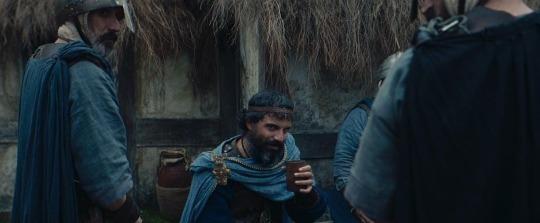

Belasko
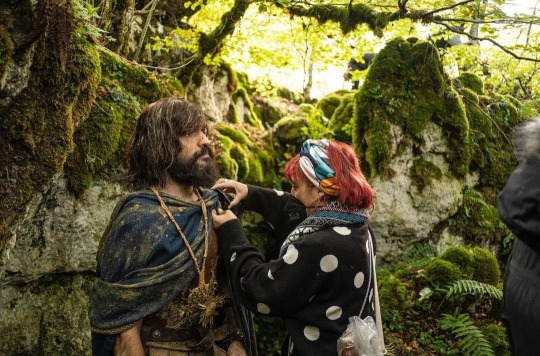
Here's another pic from the filming. It's interesting because Eneko is wearing an amulet of a Eguzkilore.
The Eguzkilore: is a flower of the thistle Carlina acaulis, "the flower of the sun", named for the similarity of its shape with the sun.

According to basque mythology, Amalur, mother earth, created the Eguzkilore to protect humans from evil spirits. A thistle, which, located at the entrances of houses throughout the Basque Country, Navarra and other places of Aragon and Catalonia, symbolizes the sun during the hours of darkness, at night, thus preventing the entry of all evil beings.

This plant and its roots were essential during the plague epidemic that devastated the peninsula during the reign of Charlemagne. And it is that, according to what they say, the antibiotic properties of Eguzkilore helped to deal with this pandemic, hence its name, Carlina, from Charlemagne.

The Eguzkilore probably is going to be an important element of the film. In the Donosti Festival Edurne Azkarate is carrying a piece of wood with a Eguzkilore.
Probably Luxa or Irati gave Eneko a eguzkilore as a protection amulet.

Also the brooch of adult Eneko's outfit could be a reference to the Eguzkilore (idk the form reminds me of that) and the brooch also could be a reference to the coat of arms and the banner of the Kingdom of Navarra (and current COA of the community of Navarra), at least from the central part of the COA.
Pamplona/Navarra will not be a a kingdom until Sancho Garcés I in 905, but maybe this could be a symbol shown in the film, that in the film-universe would be recurrent and would derive into Navarra's banner.
One heraldy symbol related with Eneko is the cross of Eneko Arizta (A silver cross, kick pointed at its lower arm, located in a frank barracks, on a field of azure). It was used as part of the heraldy of Aragon (X), attributed to be Eneko's sigil, but probably that wasn't the case, and it could be a way of the Aragonese monarchs to reaffirm Eneko as their antecesor (although looking into the genealogy, the rulers of the Crown of Castile, Aragon, Portugal and even the Caliphate of Córdoba were descedants of Eneko). It has been used in Aragonese heraldy since Sancho Ramírez (ca. 1043–June 4, 1094), I of Aragon and V of Pamplona. This is his sigil (x).
There are some examples of personal sigils of some Aragonese kings with the cross: like the one from Peter IV (×), one of the sigils of Alfonso V and John II (X)(×) and one of the sigils of Ferdinand II (x)(X)
The cross of Eneko is also part of some coat of arms nowadays, like the shield of the community of Aragon (x) or the one from the Valencian Community (x).
In one of the covers of El Ciclo de Irati comics Eneko appears with a shield of an eagle (×) (in addition, the artwork of the eagle of the shield reminds me a bit of these Visigothic aquiliform fibulae from Alovera) it's similar to the sigil of Sancho VII of Navarra "the Strong" (Tudela, April 17, 1154 -Tudela, April 7, 1234), the last king of the Jimena dinasty in Navarra, his successor was his nephew, Theobald I "the Troubadour" (Troyes, May 30, 1201-Pamplona, July 8, 1253), son of Blanche of Navarra and count Theobald III of Champagne. The sigil of Sancho, a black eagle on a red field (×), is considered the primitive coat of arms of Navarra, but it was switched with the current carbuncle sigil.
Bonus track:
Sometimes in the Aragonese royal heraldy apart from the mantel with the cross of Eneko, ther was also the Royal Crest, that in Aragon was a dragon (×), or the old crest with a bat (x) and a black eagle for Sicily (×).
For the heraldy od Aragonese monarchs of Naples, the crest of the dragon was also used, for example the one from Alfonso V's bastard son, Ferdinand I of Naples (×)
The support may differ, for example Ferdinand II's sigil in his late years have two griffons as supports (×)
The royal crest of Navarra was the feathers of a peacock (×). For example, one of the sigils of John II of Aragon uses this crest (×), as king of Navarra. There's a contrast between the main sigil (x). Probably the two greyhounds have the helmet on their heads covering their eyes because for several years John was blind.
He suffered from cataracts, until on October 12, 1468, at the age of 70, he recovered his sight thanks to the Catalan Jewish surgeon Cresques Abnarrabí who operated the king on both eyes.
Apart from the Navarrese monarchs, John of Austria (Philip II's bastard brother) used a peacock feather crest in one of his sigils (×)
The royal crest of Castile was a lion and a castle (×) and there was an old one with a griffon (×). And the supports of the Castilian coat of arms were often two lions, like the heraldy of John II of Castile and Henry IV (×) or Isabella I (×)
The royal crest of Portugal was a dragon(×) and the supports of the COA were two green dragons (×)
During the Iberian union during the reigns of Philip II, Philip III and Philip IV (before Portugal became independent again) the coat of arms included the Royal crest of the Crown of Castile, Aragon and Portugal (×)
#irati#films#pics#costume design#eneko sagardoy#edurne azkarate#paul urkijo alijo#nerea torrijo#iñigo aranburu#kepa errasti#history#heraldy
3 notes
·
View notes
Text
ORDOÑO III
King of León
(born c. 926 - died 956)

pictured above is an imagined portrait of the King of León, by Isidoro Lozano from 1852
-------------------- ~ -------------------- ~ --------------------
SERIES - Descendants of the Kings of Asturias: Ordoño was a great-grandson of Alfonsu III, King of Asturias from 866. Some sources consider that his grandfather Ordoñu II, King of León was also King of Asturias from 914, although ruling from León.
-------------------- ~ -------------------- ~ --------------------
ORDOÑO was born around 926, somewhere at the Kingdom of León. He was the second son of Infante Ramiro of León and his first wife Adosinda Gutiérrez. As at the time of his birth his father may have already been the ruler of the County of Portugal he could have been born there.
He was a member of the Ordóñez Dynasty branch of the ASTUR-LEONESE DYNASTY and was named ORDOÑO RAMÍREZ, meaning Ordõno son of Ramiro.
In the 930s a lot happened in his life. By 930 his father probably reputiaded his mother. While in 931 his father succeeded as Ramiro II, King of León and he became an INFANTE OF LEÓN. And around 932-34 his father remarried to Urraka Santxitz of Pamplona.
Around 944 he marrried URRACA, of Castilian nobility. She was a niece of his stepmother as one of the daughters of Fernán González, Count of Castile and Antsa Santxitz of Pamplona. They possibly had one son.
Very little is known about his life before his father's death in 951, when he succeeded as ORDOÑO III, KING OF LEÓN because his older brother was already dead.
Though his succession was challenged by his younger half-brother Infante Sancho with the support of the Count of Castile and the Kingdom of Pamplona.
So some sources believe that because his father-in-law the Count of Castile supported his half-brother's claim over his own he reputiaded his wife around 952-53.
As it is believed that his only son was born during the period in which he was separated from Urraca, some sources believe that the mother of this child could have been an unrecorded second wife or a mistress.
Trying to work out a plausible maternal ancestry for his son, some sources believe that the mother of this child could have been a certain ELVIRA, one of the daughters of Pelayo González, Count of Deza and Hermesinda Guterrez.
But as these speculations clash out with his recorded wife having been mentioned again in charters from June 954, it is believed that he probably reconciled to Urraca before that.
Hence there are no consensus over who was the real mother of his only child or if he was legitimate or illegitimate.
It is believed that he could have probably reconciled with his wife do to the Count of Castile having changed sides and having began to support his claim over the throne.
At the beginning of his reign he also had to endure internal rebellions and Muslim attacks, but succeeded in signing a truce with the Muslims from the Caliphate of Córdoba.
Also during his reign the Kingdom of León continued to have problems with the growing power independence of the County of Castile and he ended up briefly making piece with his father-in-law.
The King of León died in Zamora, in 956, probably already in his thirties.
-------------------- ~ -------------------- ~ --------------------
After he died his half-brother could finally become King Sancho I, as the uncontested Monarch of León, probably because his only son was still a child.
However, around 958 his half-brother was deposed and King Ordoño III's widow was married by her father to the new King Ordoño IV (a cousin of King Ordoño III). Not long after, she would also end up becoming a Queen Consort of Pamplona through her third marriage to King Antso II.
By 985 his only son could finally inherit the Kingdom as Bermudo II, King of León. And it is through his son that all subsequent Monarchs of León and Spain are his descendants, and also all Monarchs of Castile since 1065.
-------------------- ~ -------------------- ~ --------------------
Check my posts about ORDOÑO III's family, his Royal House and his connections to the Kings of Asturias!
ORDOÑO III had one child... either legitimate or illegitimate
With his wife URRACA, an unrecorded second wife or a mistress...
Bermudo II, King of León - husband first (possibly) of Velasquita and second of Elvira of Castile.
He was born a member of the Ordóñez Dynasty branch line of the Astur-Leonese Dynasty.
In a span of four generations, ORDOÑO III was related to the Kings of Asturias through his father…
His father was Ramiro II, King of León.
His grandfather was Ordoñu II, King of León - possibly the King of Asturias between 914-24.
His great-grandfather was Alfonsu III, King of Asturias - the King of Asturias between 866-910.
#ordoño iii#king of león#middle ages#medieval spain#medieval europe#astur leonese dynasty#royals#royalty#monarchy#monarchies#asturian royalty#spanish royals#royal history#asturian history#spanish history#iberian history#european history#world history#history#reconquista#10th century#history with laura
2 notes
·
View notes